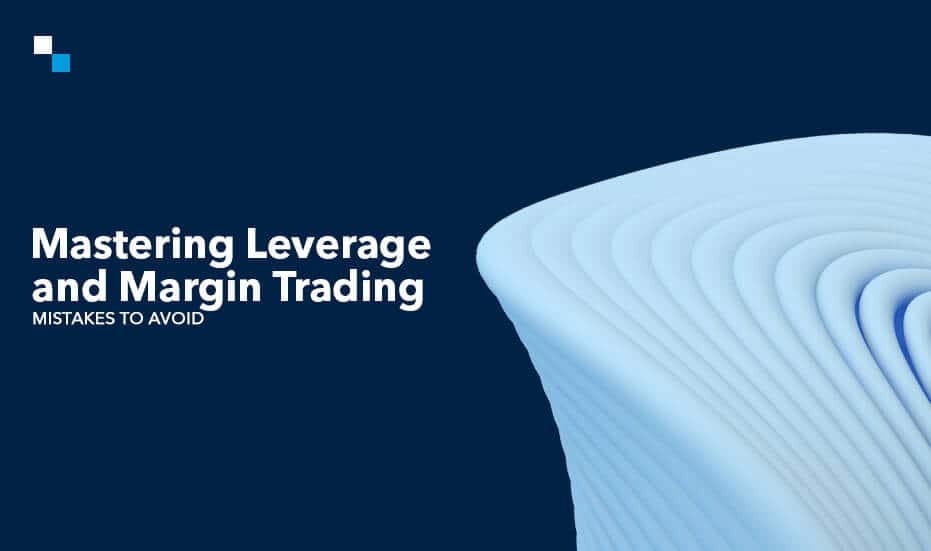Leverage and margin trading can be powerful tools for experienced traders seeking to amplify their profits. However, these practices also come with inherent risks that can lead to significant losses if not understood and managed carefully.
In this article, we will explore how to avoid common leverage and margin trading mistakes, particularly when using a leverage and margin trading exchange, and provide insights into margin trading exchange software development that can enhance your trading experience.
Understanding Leverage and Margin Trading
Before diving into the common mistakes and how to avoid them, it’s essential to grasp the basics of leverage and margin trading.
Leverage allows traders to borrow funds to increase their position size beyond what they could afford with their own capital. This can amplify profits but also magnify losses.
Margin trading involves using borrowed money from a broker to trade a financial asset, forming the collateral for the loan from the broker.
Margin Trading Exchange: A platform specifically designed for margin trading, facilitating the borrowing and lending of funds for leveraged trades.
Trading on a leverage and margin trading exchange offers the opportunity to capitalize on market movements with a larger capital base. However, it also requires careful planning and risk management to avoid substantial losses.
Common Leverage and Margin Trading Mistakes and How to Avoid Them
1. Overleveraging
One of the most common mistakes in leverage and margin trading is overleveraging. This occurs when traders take on excessive debt to increase their positions, exposing themselves to higher risk.
How to Avoid Overleveraging:
- Use Moderate Leverage Ratios: Stick to conservative leverage ratios, especially if you are new to margin trading.
- Risk Management: Always have a risk management strategy in place, such as stop-loss orders, to limit potential losses.
- Understand Your Limits: Only use leverage that you can comfortably manage and afford to lose.
2. Ignoring Margin Calls
A margin call happens when the value of your trading account falls below the broker’s required minimum margin. Ignoring margin calls can lead to forced liquidation of your assets at unfavorable prices.
How to Avoid Ignoring Margin Calls:
- Monitor Your Account Regularly: Keep a close eye on your margin levels and account balance to avoid unexpected margin calls.
- Maintain Sufficient Margin: Always ensure you have enough funds in your account to meet margin requirements.
- Set Alerts: Use leverage and margin trading exchange features to set alerts for margin levels to stay informed about your account status.
3. Lack of Research and Planning
Entering the market without adequate research and a well-thought-out trading plan is a recipe for disaster. Successful margin trading requires a deep understanding of the market and careful planning.
How to Avoid Lack of Research and Planning:
- Educate Yourself: Take time to learn about the markets, trading strategies, and technical analysis.
- Develop a Trading Plan: Create a detailed trading plan outlining your goals, risk tolerance, and strategies.
- Use Analytical Tools: Utilize the analytical tools provided by your leverage and margin trading exchange to make informed decisions.
4. Emotional Trading
Trading based on emotions rather than logic and analysis can lead to poor decisions and significant losses. Emotional trading often results in overtrading, revenge trading, and abandoning trading plans.
How to Avoid Emotional Trading:
- Stick to Your Plan: Follow your trading plan strictly, and don’t let emotions dictate your decisions.
- Use Automated Trading: Leverage margin trading exchange software development to automate your trades and remove emotional bias.
- Take Breaks: Step away from trading if you find yourself becoming emotionally involved.
5. Not Using Stop-Loss Orders
Failing to use stop-loss orders is a critical mistake that can lead to substantial losses. Stop-loss orders automatically sell your assets when they reach a certain price, protecting you from further losses.
How to Avoid Not Using Stop-Loss Orders:
- Set Stop-Loss Orders: Always use stop-loss orders to protect your investments.
- Adjust Regularly: Adjust your stop-loss levels as the market moves to lock in profits and minimize losses.
- Understand Stop-Loss Strategies: Learn different stop-loss strategies that align with your trading style.
6. Poor Understanding of the Trading Platform
Not fully understanding how to use your margin trading exchange can lead to costly mistakes. Each platform has unique features and functionalities that traders must be familiar with.
How to Avoid Poor Understanding of the Trading Platform:
- Take Tutorials: Utilize tutorials and educational resources offered by the trading platform.
- Practice with Demo Accounts: Use demo accounts to practice trading without risking real money.
- Stay Updated: Keep abreast of updates and new features in margin trading exchange software development to take full advantage of the platform.
Enhancing Your Trading Experience with Margin Trading Exchange Software Development
A modern leverage and margin trading exchange offers numerous features designed to enhance the trading experience and mitigate risks. Here are some key features to look for:
- Advanced Analytical Tools: Robust analytical tools help traders make informed decisions based on data and trends.
- Automated Trading: Automation can execute trades based on pre-set criteria, removing emotional bias and ensuring consistency.
- Real-Time Alerts: Customizable alerts keep traders informed about market movements and margin levels.
- Secure Transactions: Enhanced security features protect user data and funds from cyber threats.
The Development Process
Developing a margin trading exchange involves several crucial steps that require meticulous planning and execution to ensure a successful outcome. Here are the key points to consider in this complex process:
- Define the exchange’s trading model and margin requirements
- Develop a robust trading engine capable of handling margin orders
- Implement risk management systems for margin monitoring and liquidation
- Integrate with liquidity providers and order book management systems
- Develop user interfaces for margin trading, position management, and risk monitoring
- Implement secure wallet integration for collateral management
- Develop APIs for third-party integration and automated trading
- Ensure compliance with relevant regulations and licensing requirements
- Implement robust security measures, including multi-factor authentication and encryption
- Conduct thorough testing, auditing, and stress testing before launch
Conclusion
Avoiding common leverage and margin trading mistakes requires a combination of education, planning, and the effective use of technology. Having a deep understanding of the risks and employing strategies to mitigate them allows traders to make the most of their leverage and margin trading exchange and enhance their trading success. Leveraging advancements in margin trading exchange software development can further provide the tools and features necessary to trade efficiently and securely in the fast-paced world of cryptocurrency.
Ready to avoid those costly mistakes that can ruin the trading experience of crypto holders? Contact Antier, your trusted partner for secure, scalable, and customizable exchange development. We offer expert solutions tailored to your specific needs. Let’s discuss your project today!








